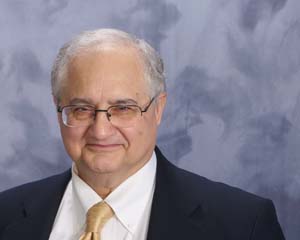Will MOOCs Break the Back of State Institutions?
By : Farhad (Fred) Saba, Founder and Editor, Distance-Educator.com
This year started with increased attention to massive open online courses (MOOCs), an idea that materialized by MIT and Stanford University when, several years ago, they decided to open their courses to the public for free, but without credit or formal admittance. The idea of MOOCs originated by Stephen Downs , and supported by David Wiley who believe education should be provided for free to those who need or want it as a basic human right. Of course, as we know, nothing is free and it remains to be seen how the economics of MOOCs will work in the future. The real cost of creating a course by a faculty is his or her salary. The fact that courses, once they are created, can be distributed at a minimal cost per student is important and should be taken into account. However, replication and distribution costs of learning objects or entire courses pale in comparison to the cost of creating them, although there are real costs involved there as well.
State institutions are burdened with multiple problems at this time, and MOOCs offered by private elite institutions might just be the straw that can break the camel’s back.
MIT and Stanford are elite private institutions with endowments that rival the annual budgets of some of the smaller developing countries in the world. Therefore, they might be able to persuade their faculty, who in most cases are the owners of the intellectual property embedded in courses, to open their course Websites to the masses. As long as the university does not charge students in a MOOC, there is no problem if faculty agree to have their courses visited by hundreds of thousands of students the world over. In fact, roughly 50% of visitors to MOOCs reside outside of the United States.
The case for state institutions to offer MOOCs becomes a bit more interesting. These institutions are supported by student tuitions as well as a shrinking subsidy by the states. According the Delta Project of the American Institutes for Research “Declines in state and local appropriations per student from 2009 to 2010 ranged from 9 percent in public research institutions to 15 percent in community colleges, bringing them below the previous lows of 2005. Net tuition revenues increased, on average, by 4 to 7 percent in public institutions.”
Therefore, it will be more difficult to persuade a student body that is increasingly going under debt to bear the burden of offering “free education” to others. According to Project on Student Debt two-thirds of college seniors who graduated in 2011 had student loan debt, with an average of $26,600 per borrower. Moreover, faculty of state institutions may be less inclined to share their intellectual property with the rest of the world without any compensation. Therefore, MOOCs offered by elite institutions will be an additional source of pressure on state institutions, which are already squeezed by an increasing demand for enrollment when their budgets are severely cut. This is especially the case, if:
A- Companies, such as, Coursera, UDACITY, and edX with roots in MIT and Stanford succeed in offering MOOCs developed by elite institutions, such as Hardvard, at a reasonable cost to students who would like to receive credit for their participation, and
B- The American Council on Education, a nonprofit organization that represents most of the nation’s college and university presidents, succeed in developing a framework for evaluating the credit worthiness of MOOCs.
State institutions, which enroll the majority of students in the system of higher education, must develop a working strategy to join the MOOC movement or lose students to MOOC providers, and other emerging alternative systems. MOOCs may not be an immediate threat to state institutions, but a “disruptive” movement to which they must pay attention. State institutions are burdened with multiple problems at this time, and MOOCs offered by private elite institutions might just be the straw that can break the camel’s back. As Richard DeMillo the author of Abelard to Apple: The Fate of American Colleges and Universities (2011, MIT Press) predicted in his book, in the coming higher education revolution the elite institutions and community colleges will do fine. It will be the institutions in the middle that will have to change dramatically if they are to survive and thrive.








